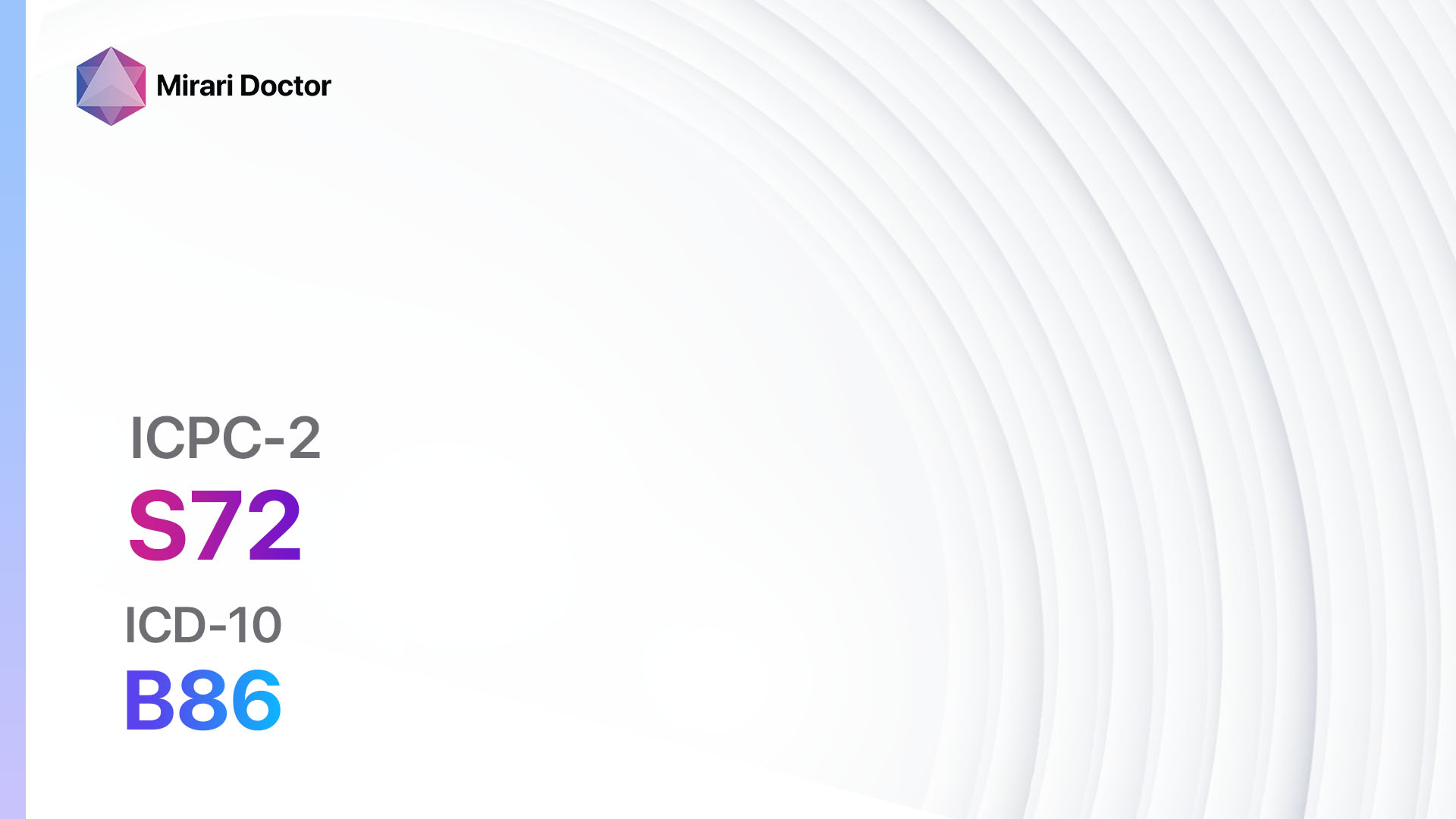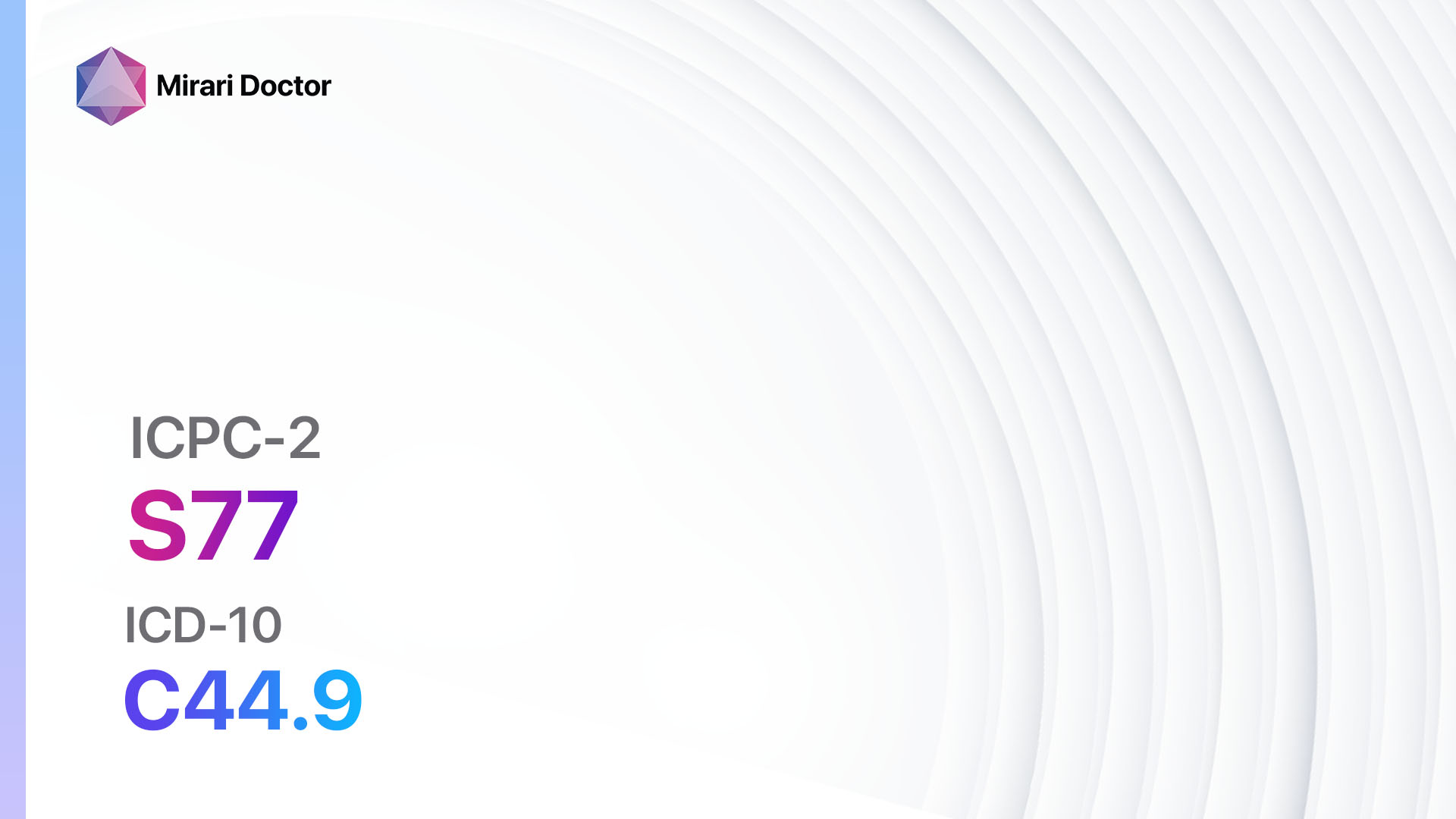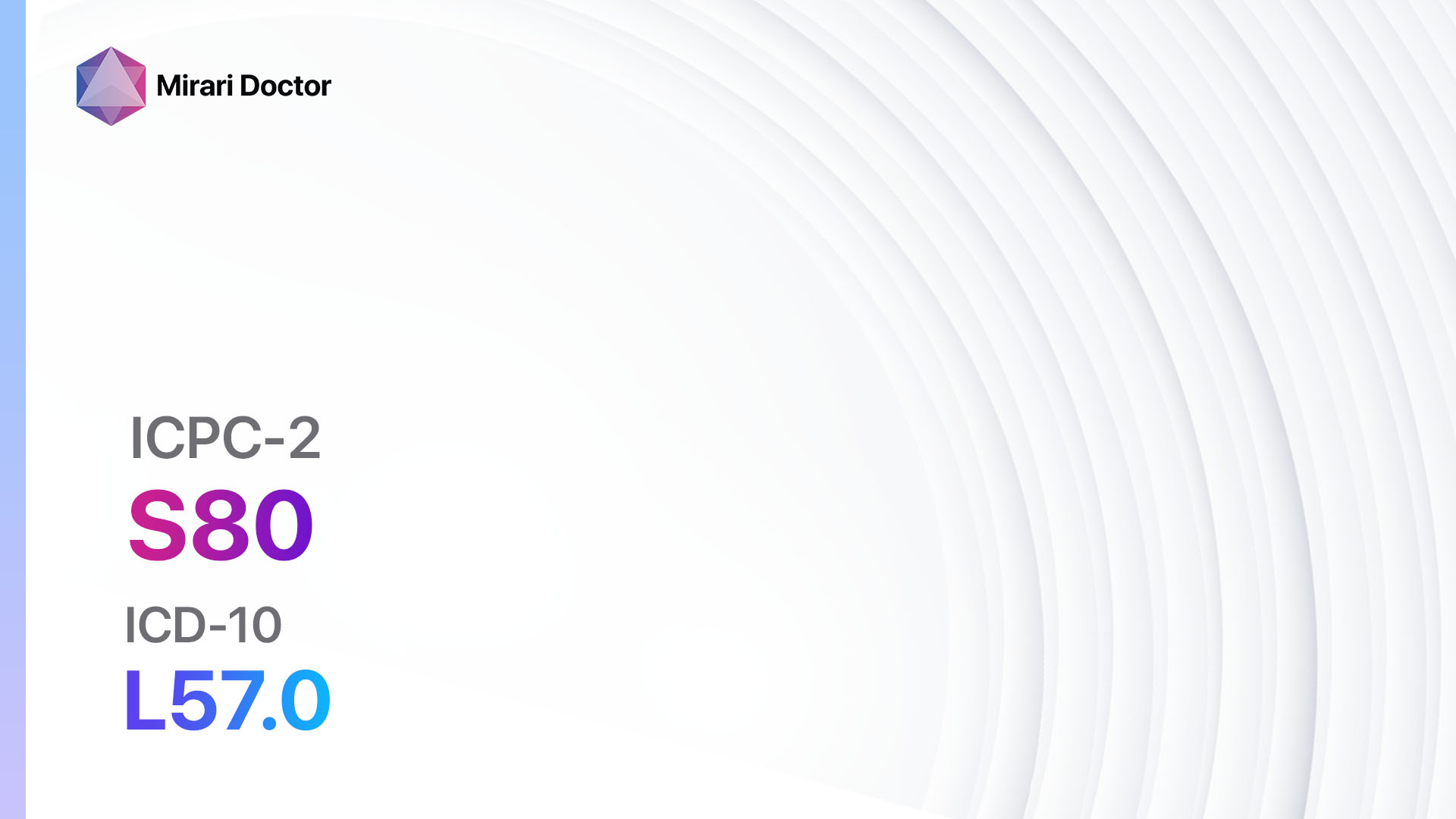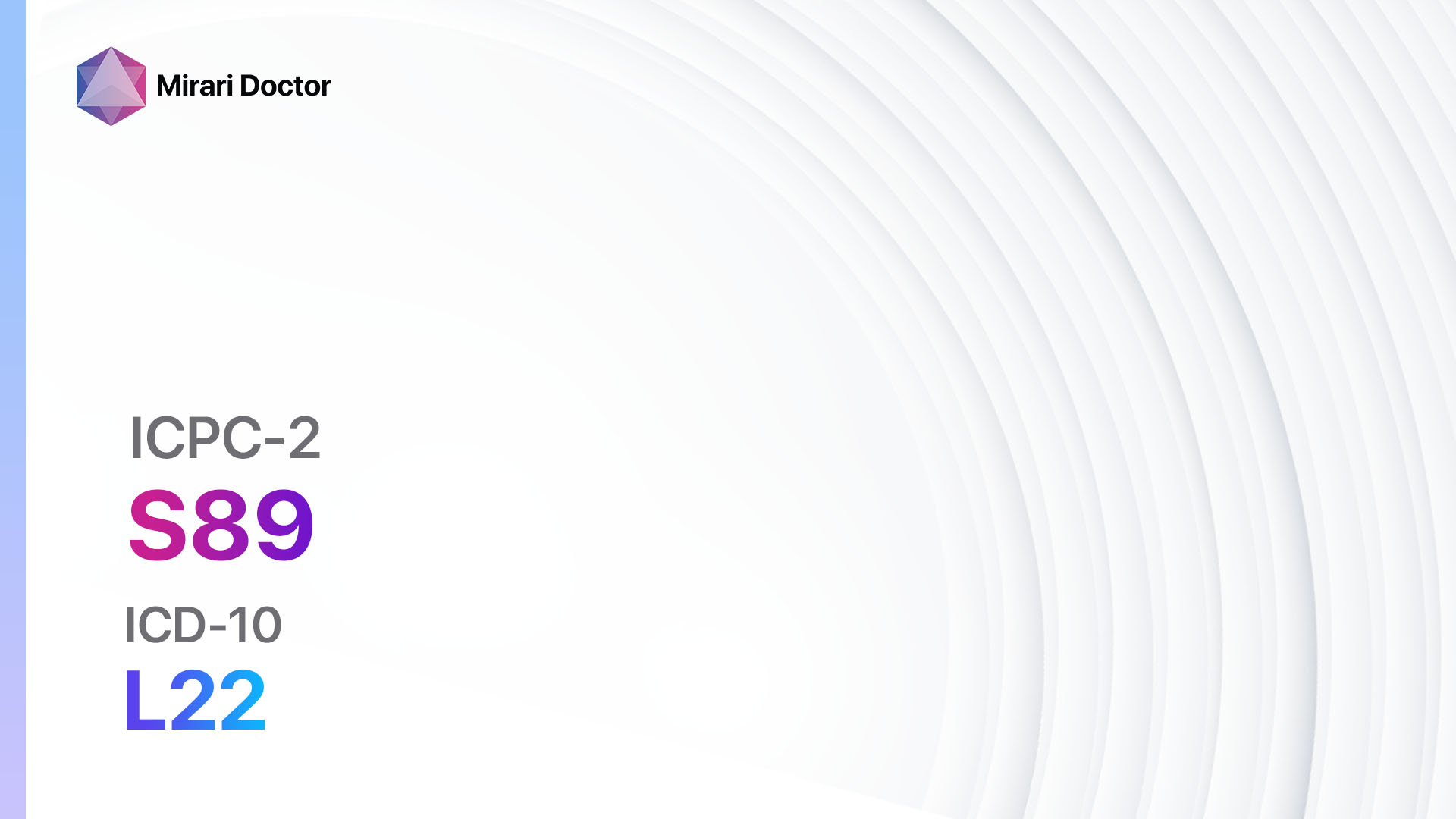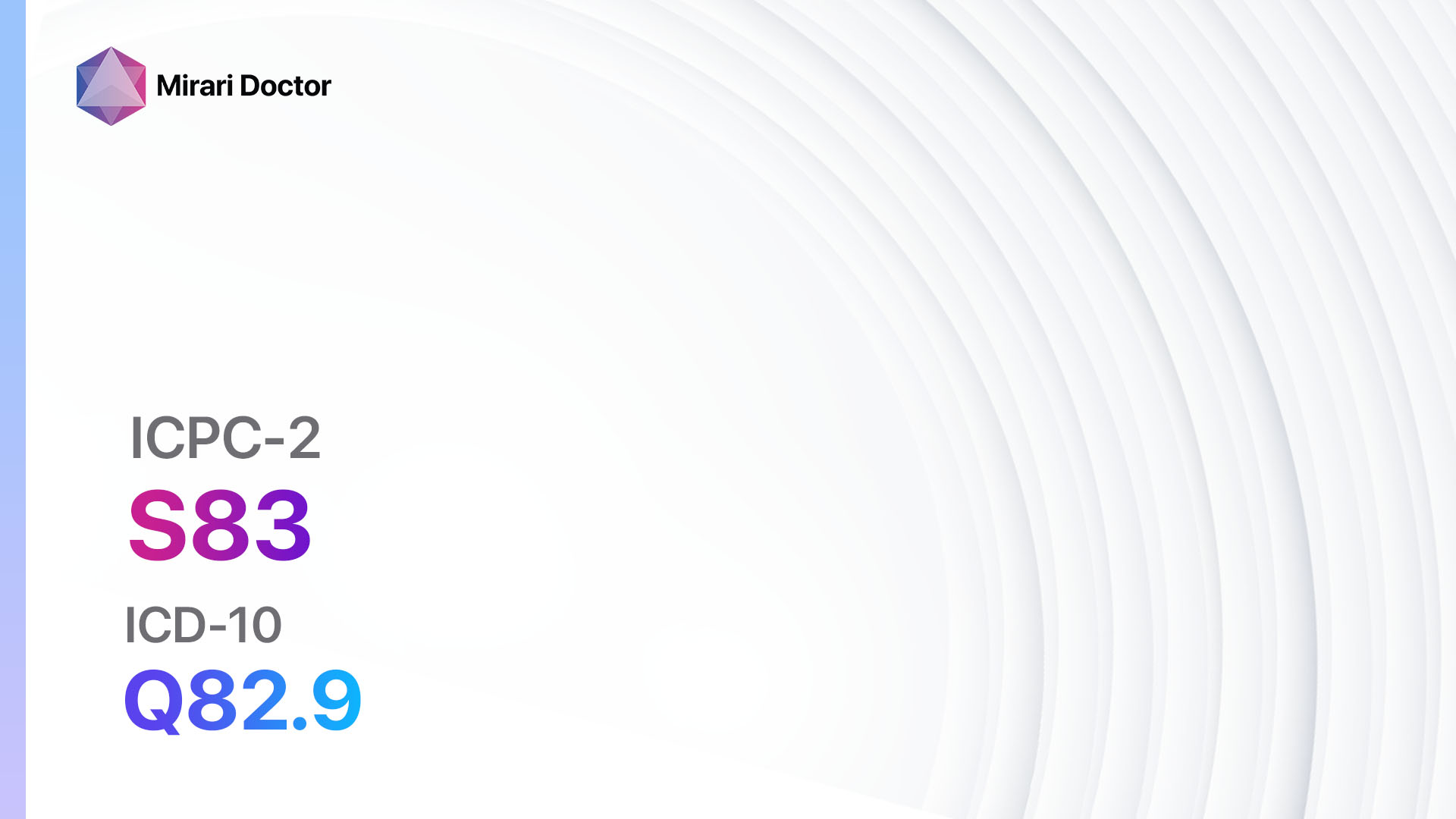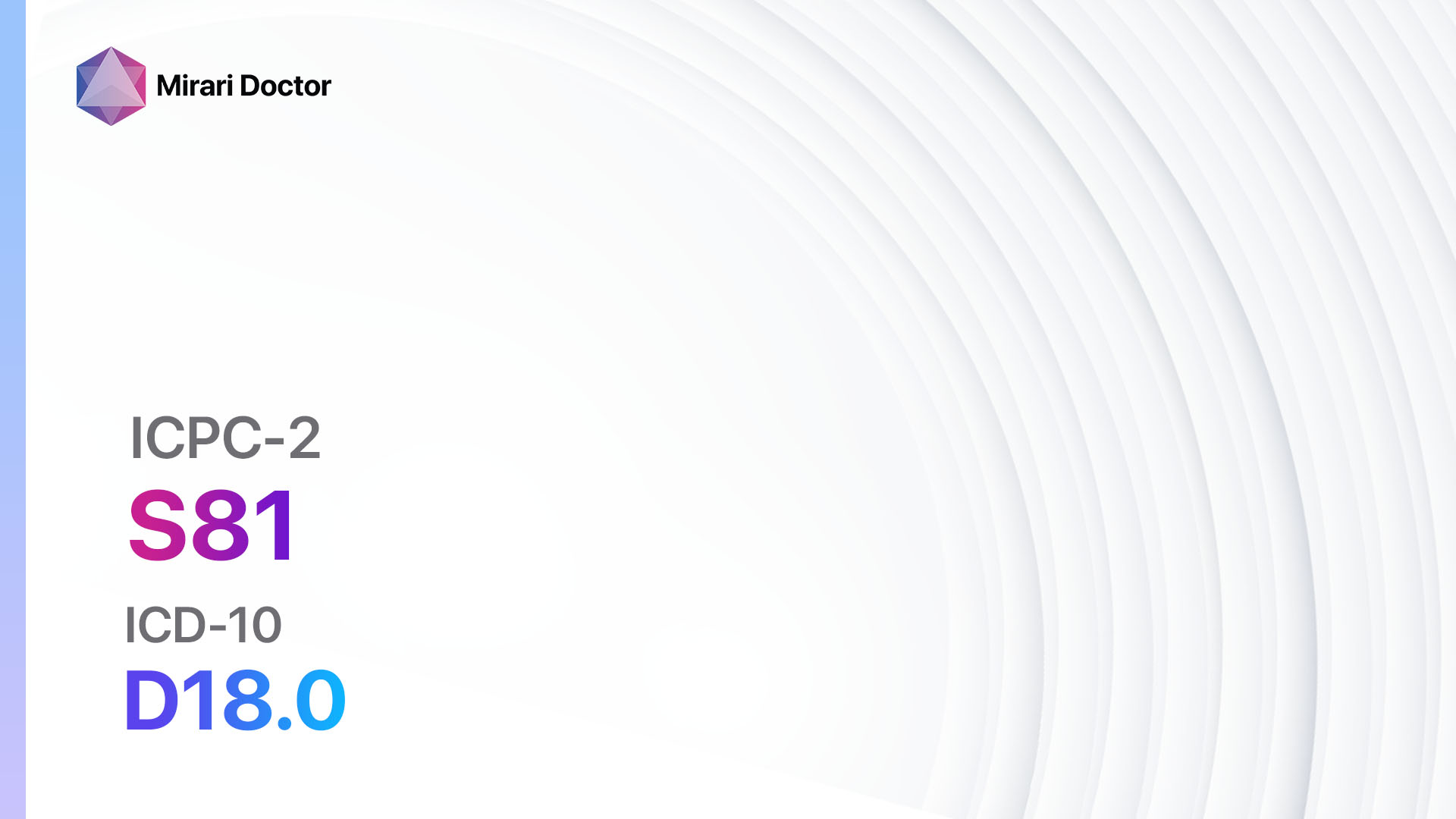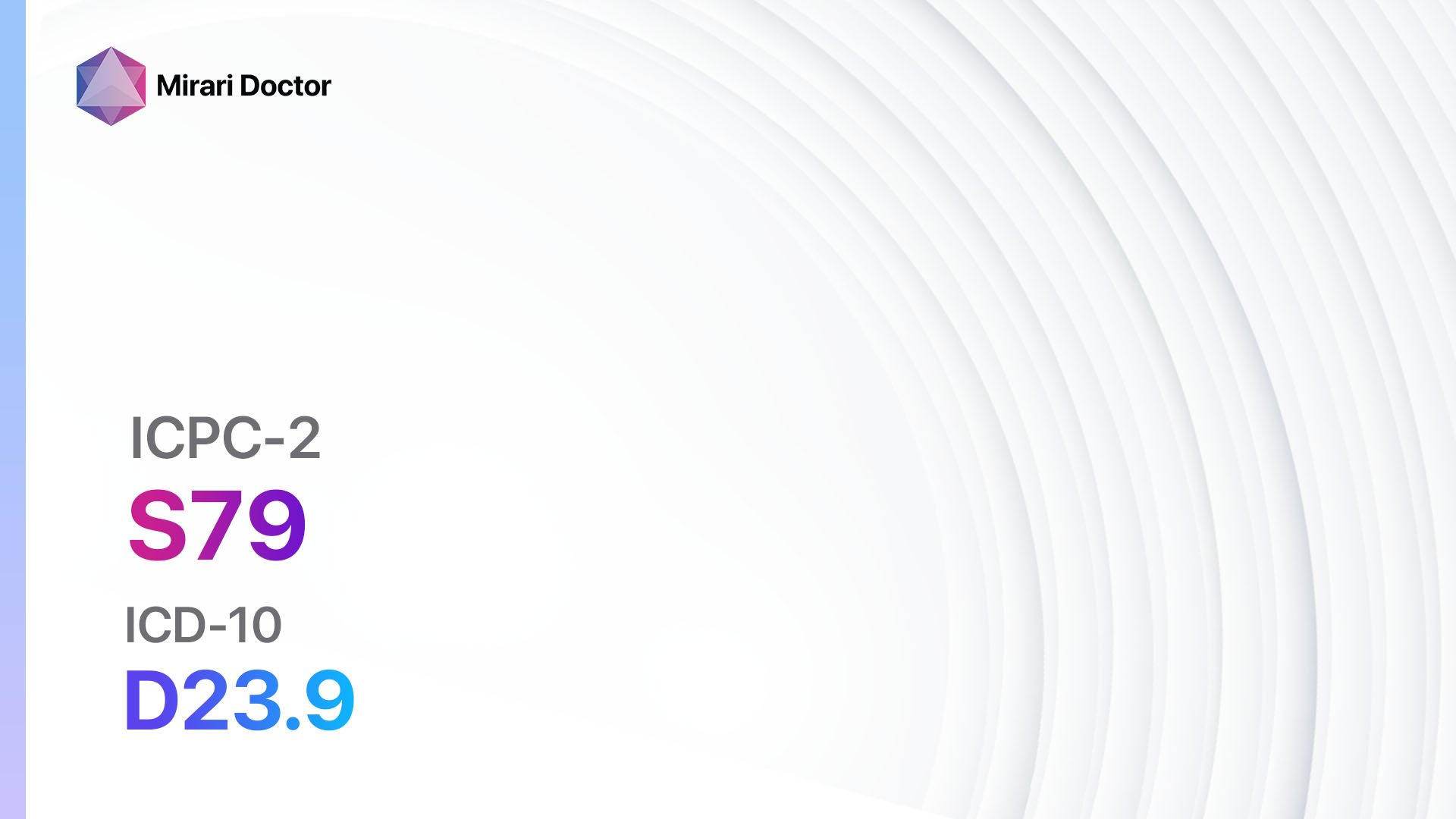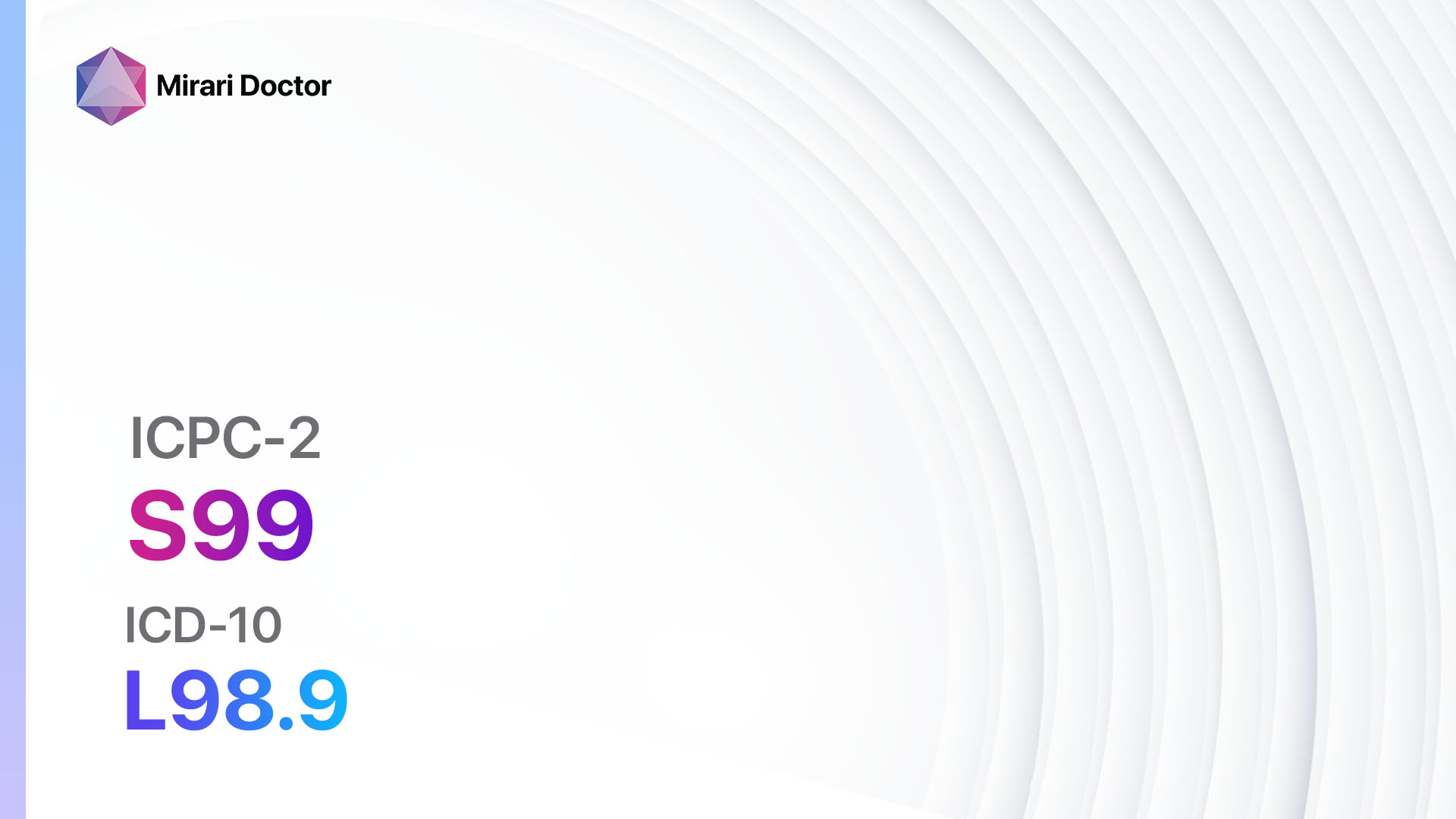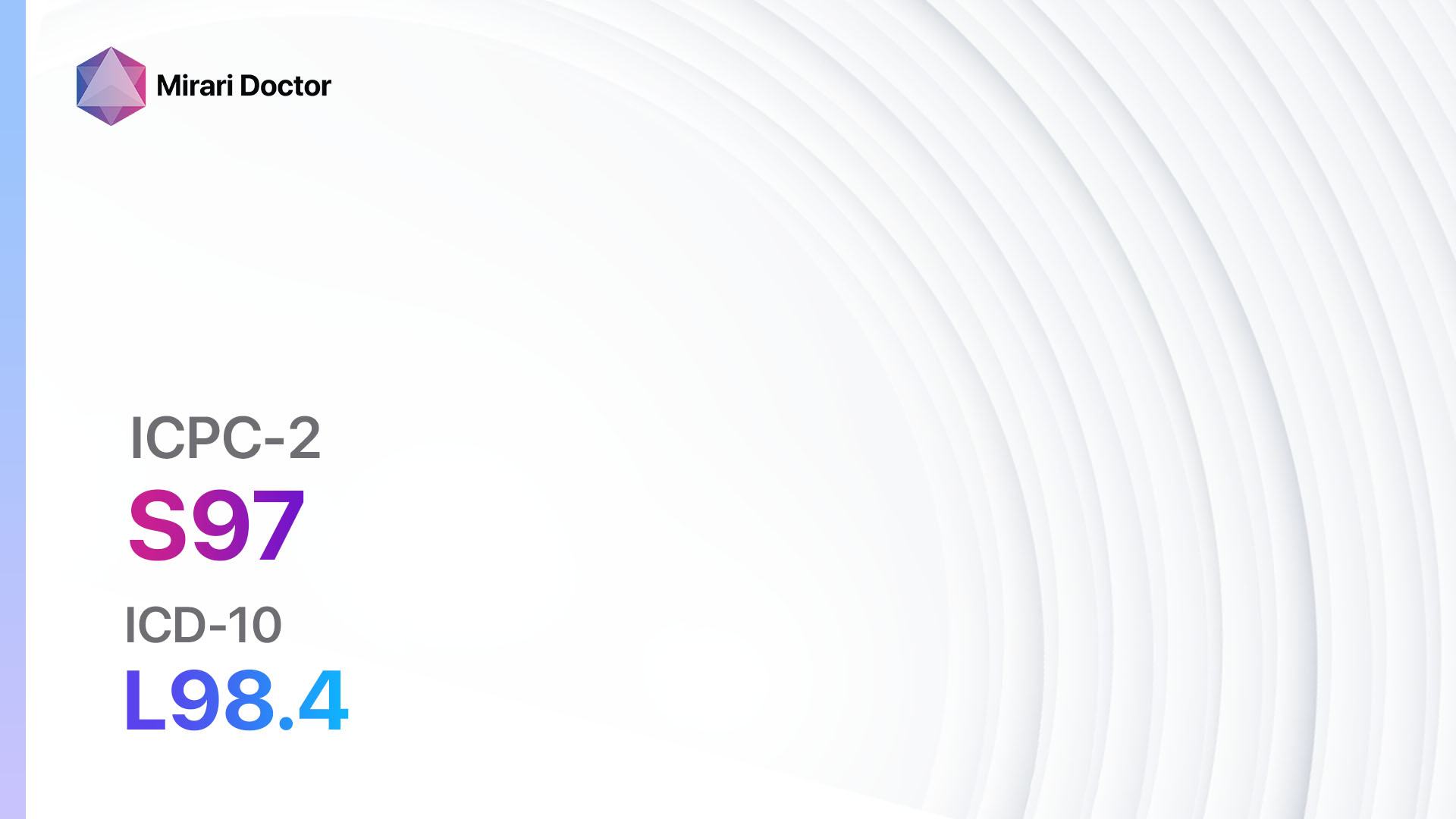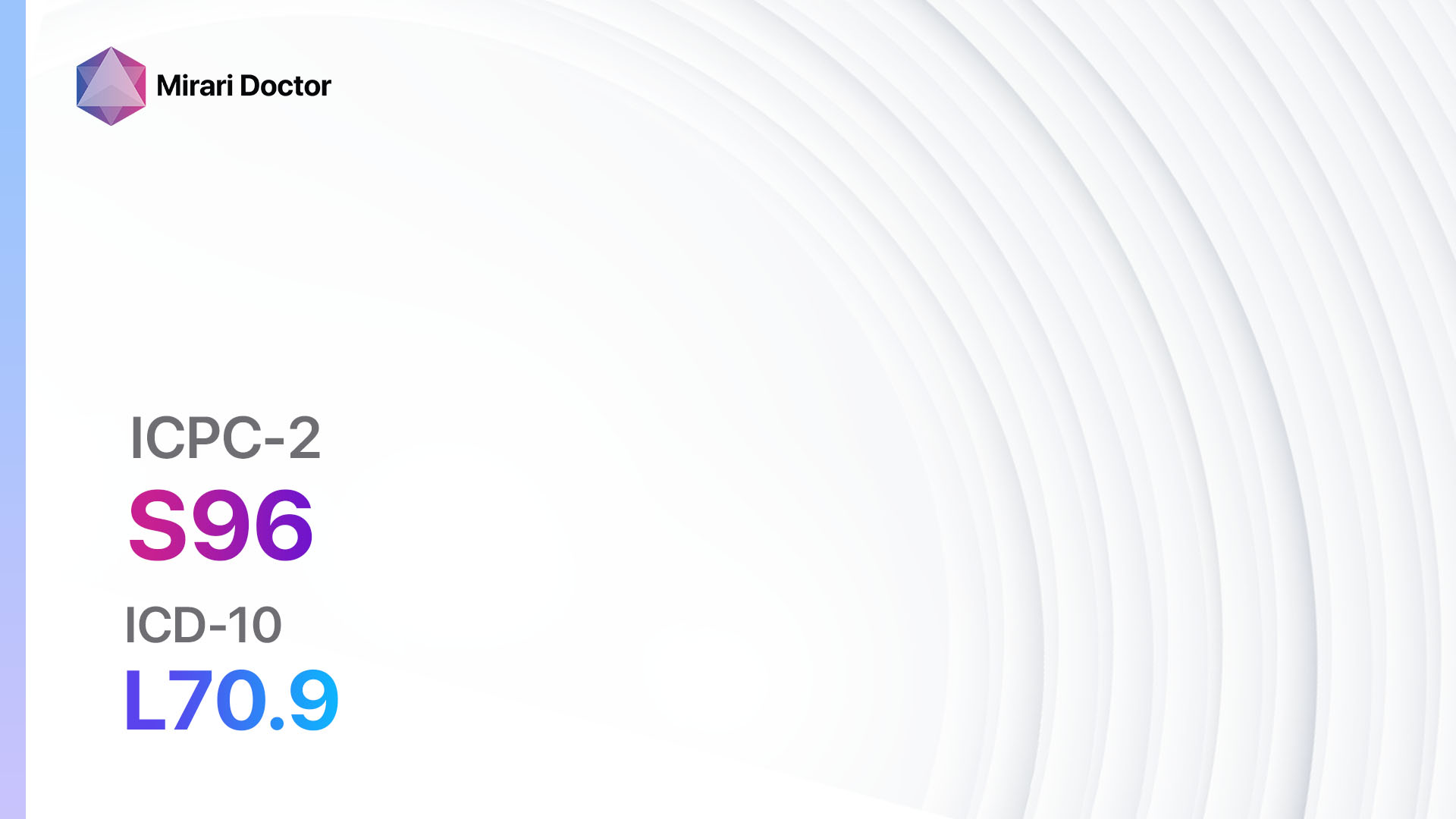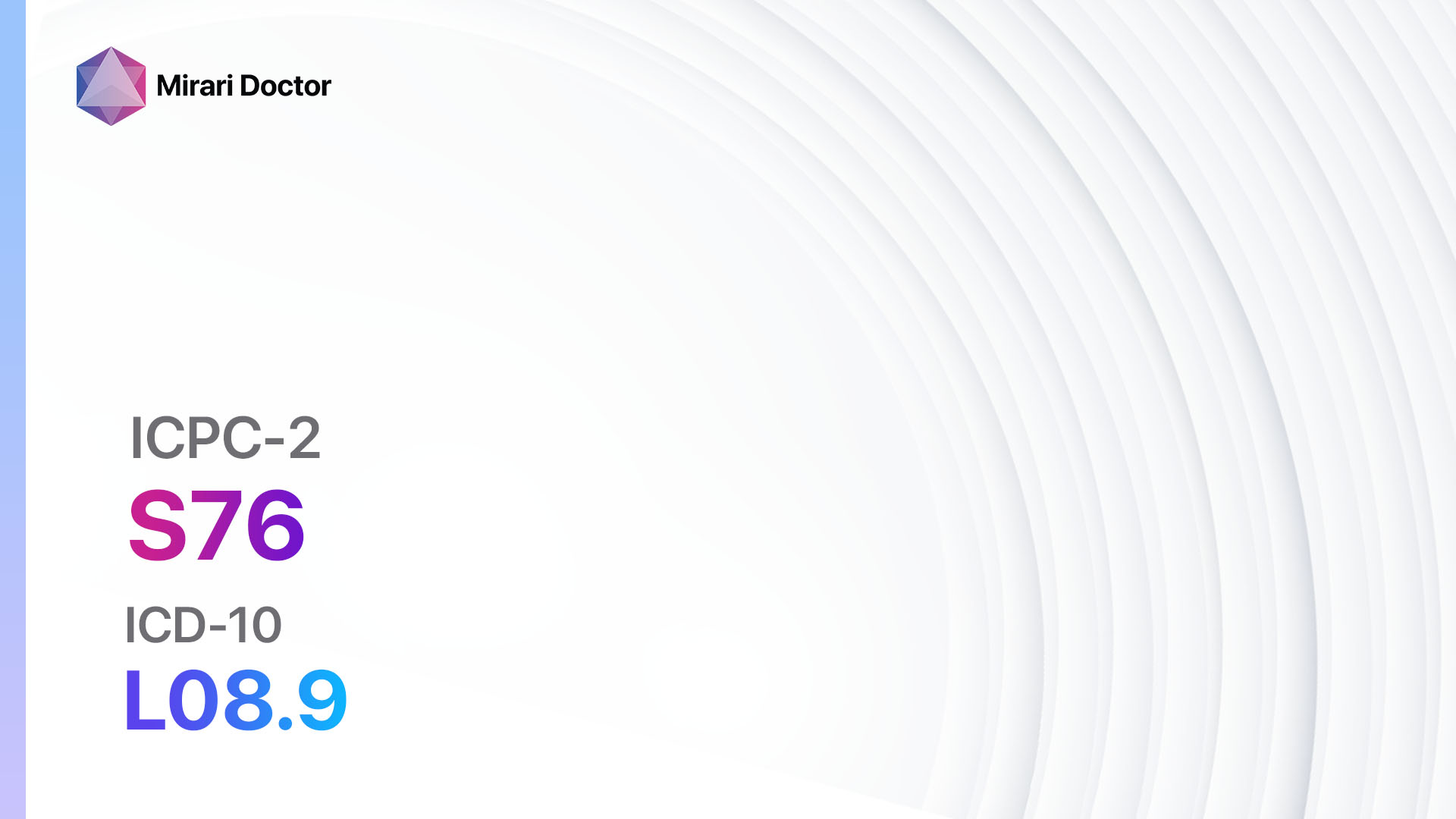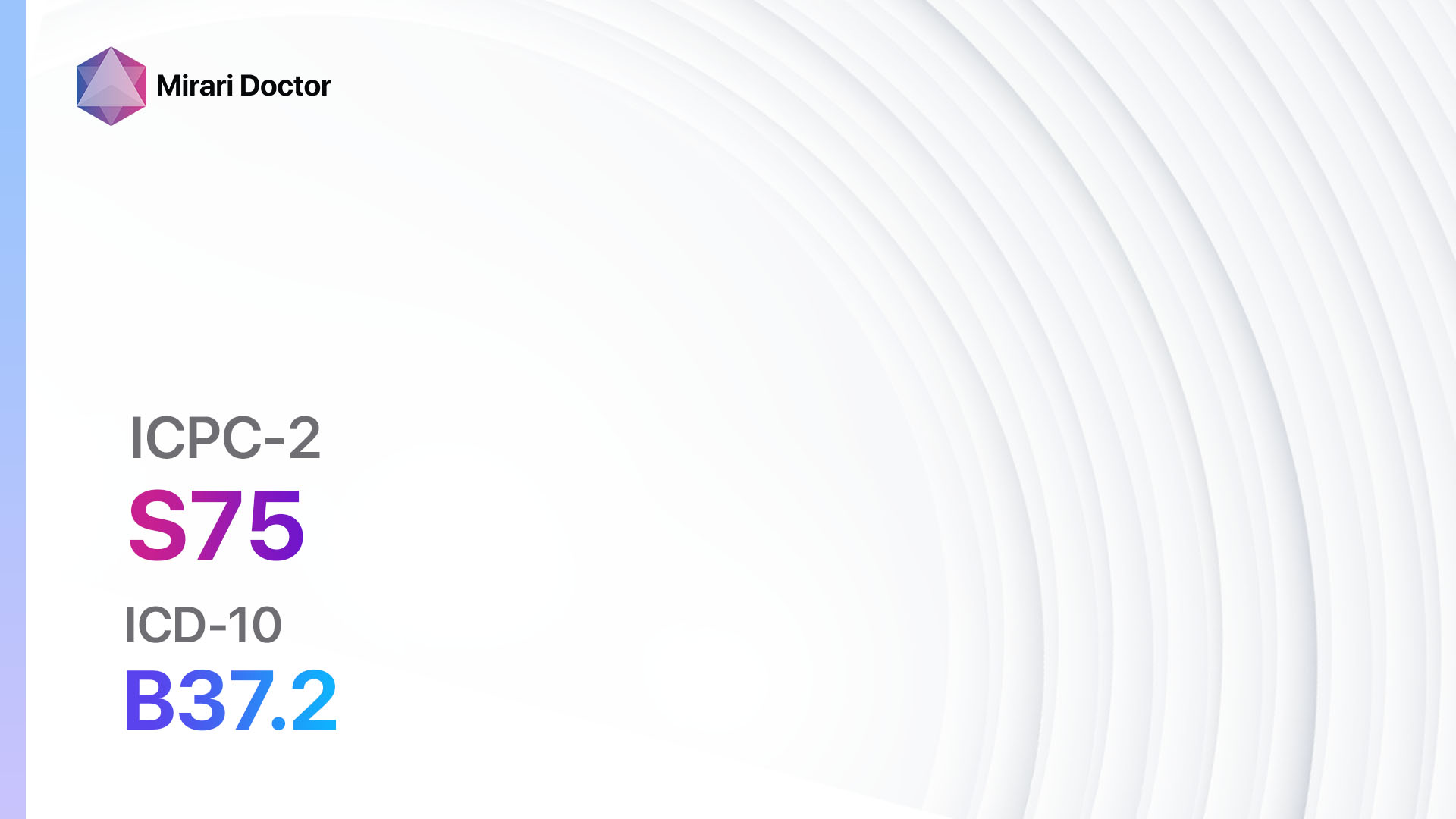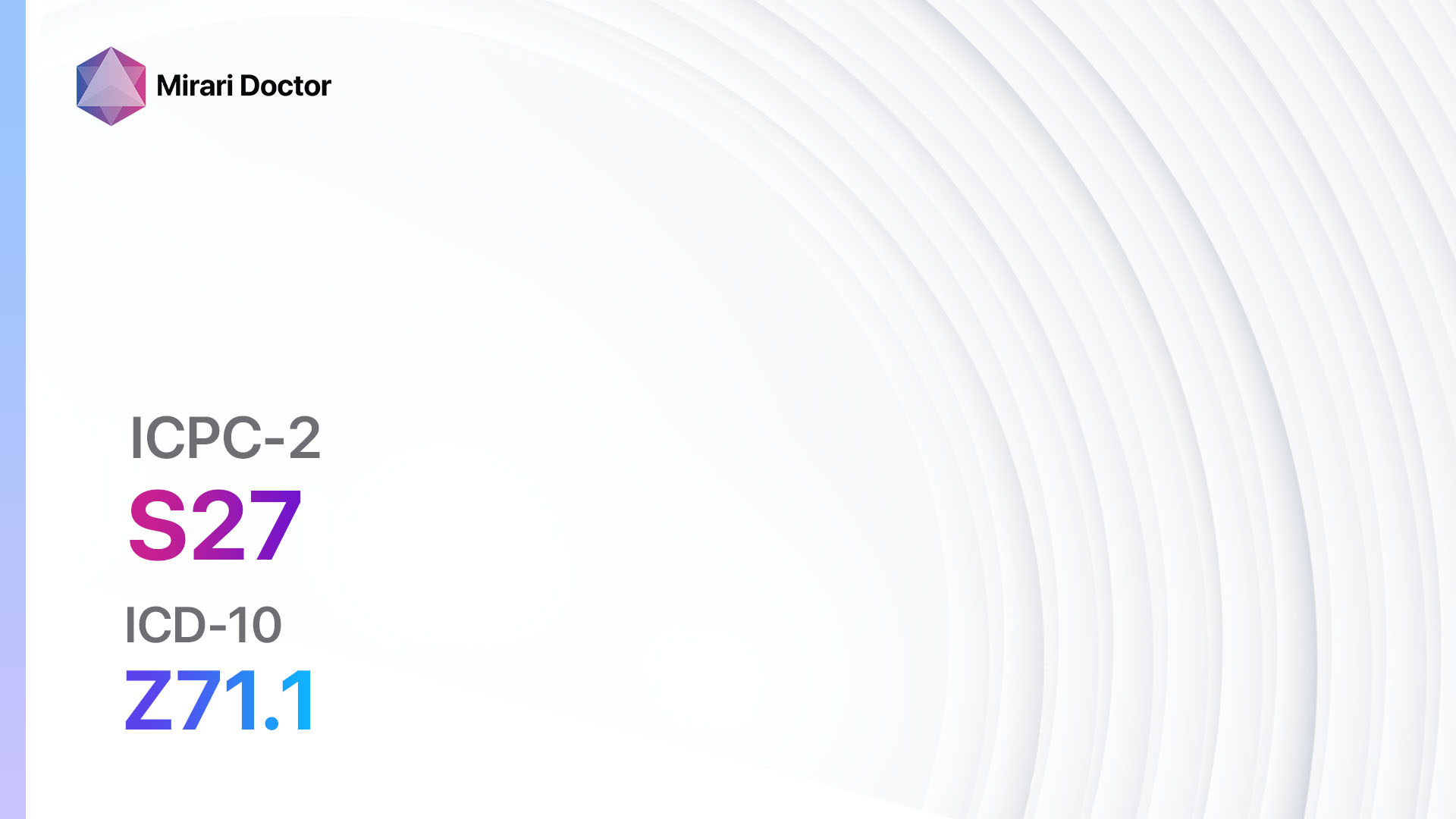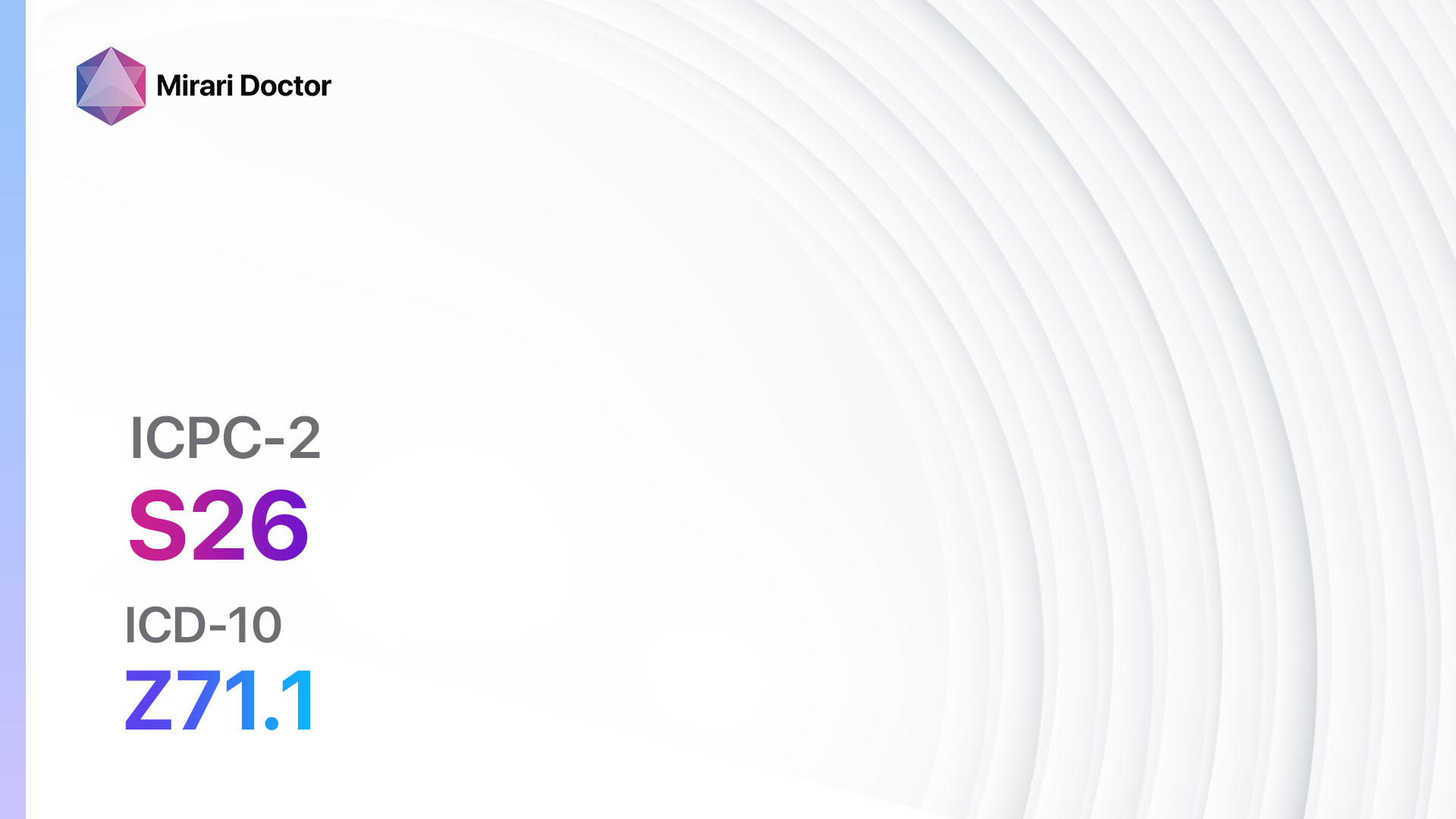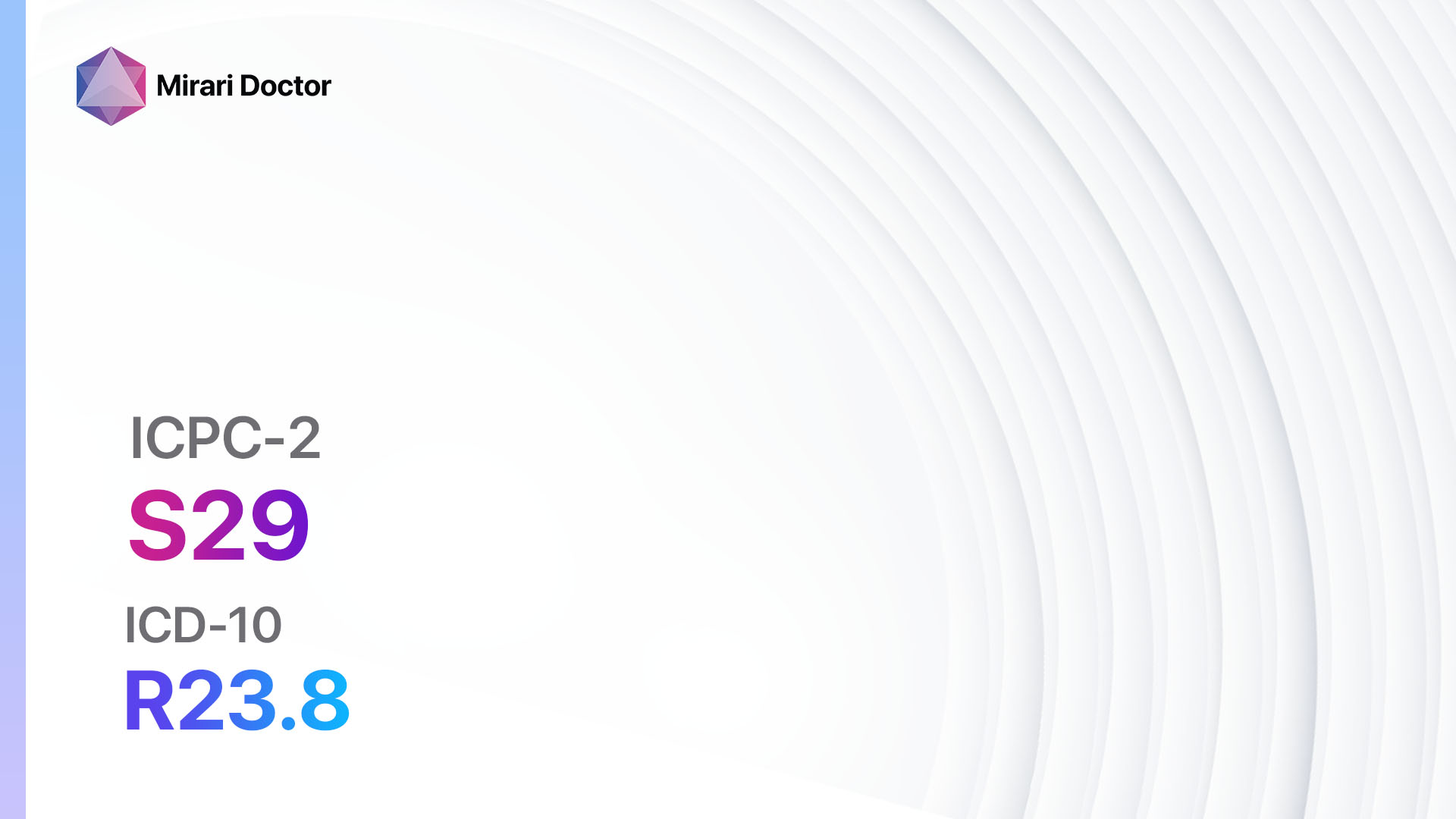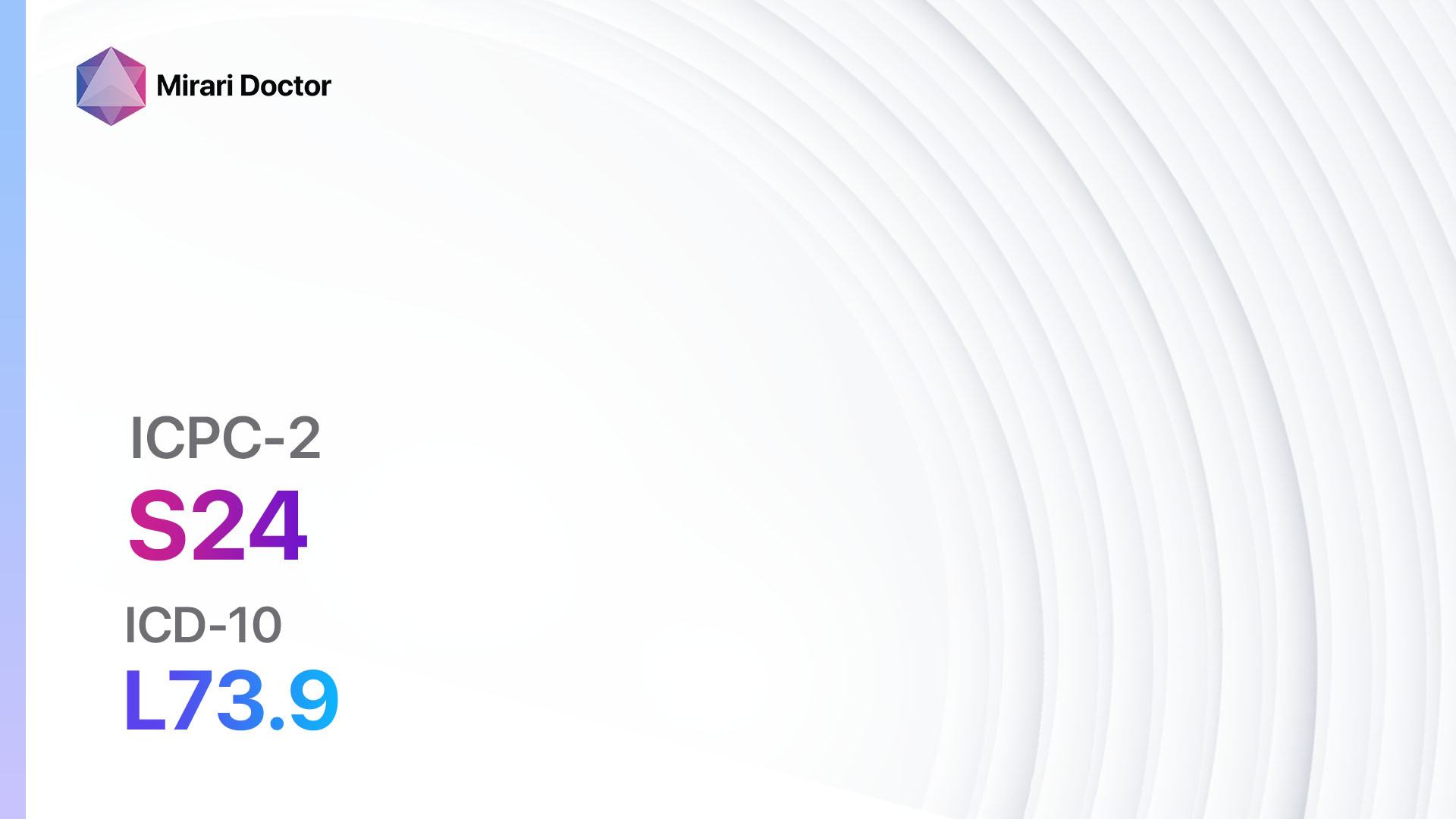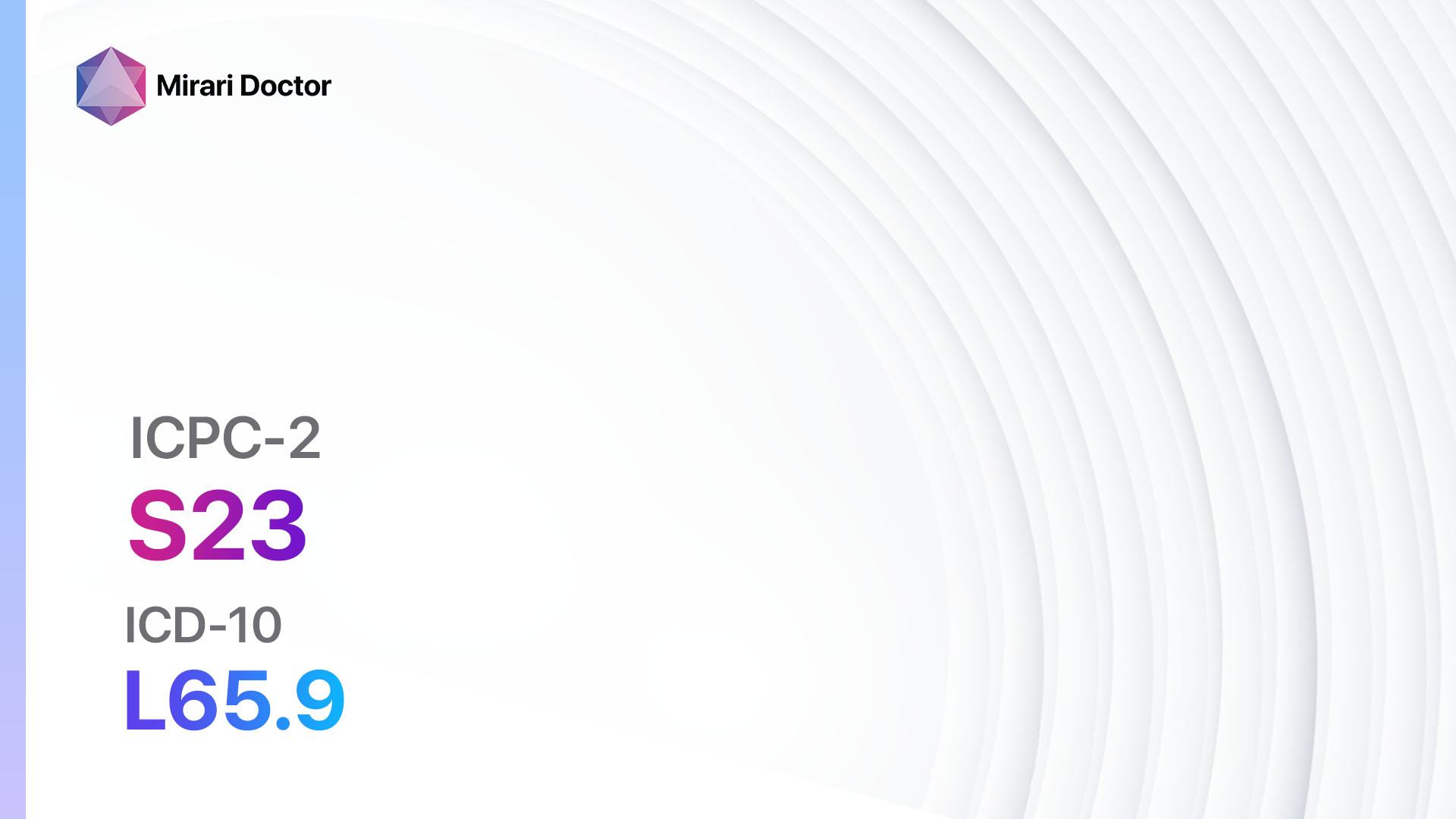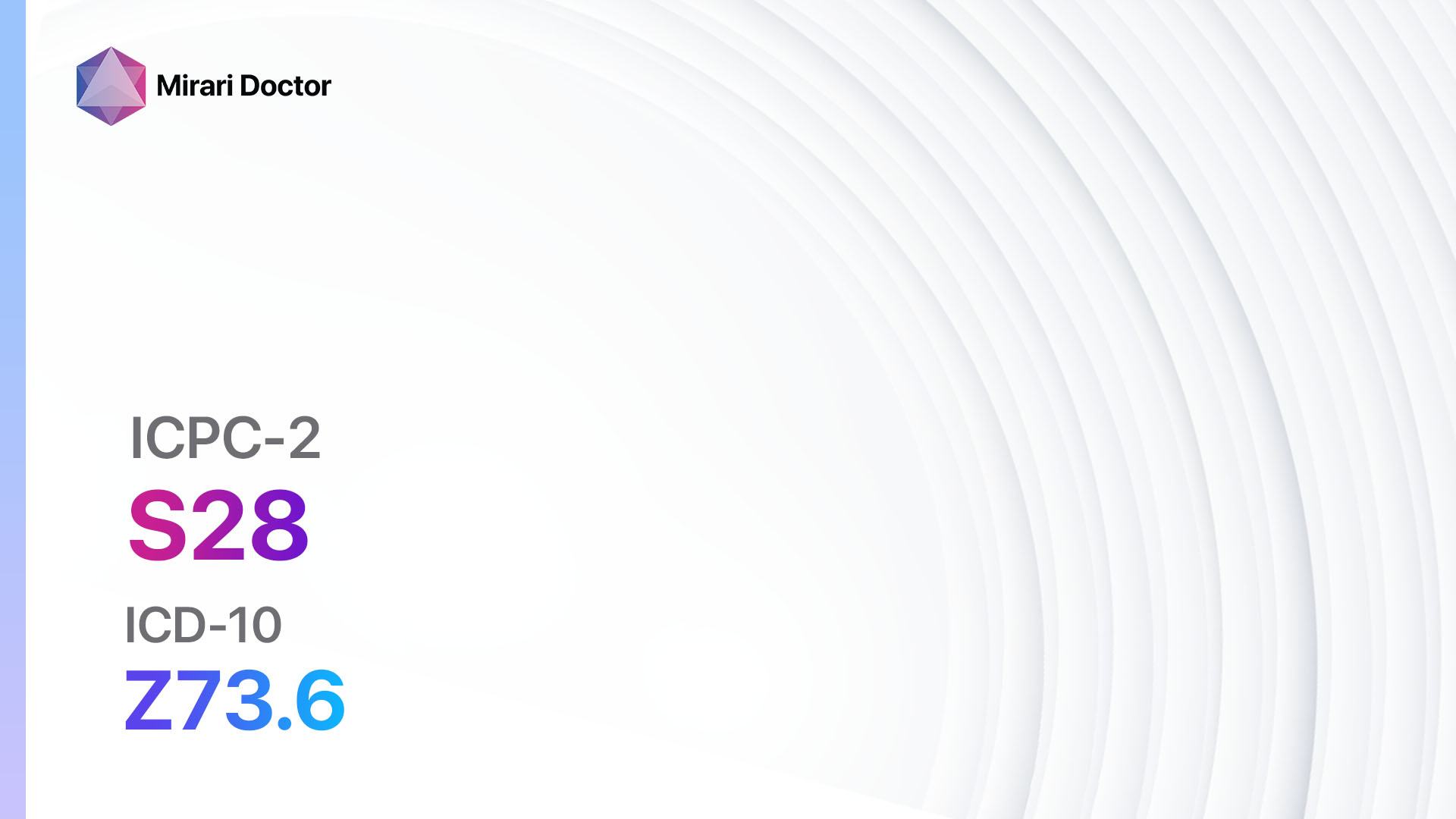
Introduction
Skin infection posttraumatic refers to an infection that occurs in the skin following a traumatic event, such as a cut, scrape, or puncture wound.[1] These infections can be caused by bacteria, fungi, or viruses and can lead to redness, swelling, pain, and the formation of pus.[2] Prompt diagnosis and treatment are essential to prevent complications and promote healing.[3]
The aim of this guide is to provide healthcare professionals with a comprehensive clinical procedural guide for the diagnosis and management of skin infection posttraumatic.
Codes
- ICPC-2 Code: S11 Skin infection posttraumatic
- ICD-10 Code: L08.9 Local infection of skin and subcutaneous tissue, unspecified
Symptoms
- Redness and warmth around the wound[4]
- Swelling and pain[5]
- Pus or discharge from the wound[6]
- Fever and chills[7]
- Increased tenderness or pain[8]
- Swollen lymph nodes near the wound[9]
Causes
- Bacterial infection: Common bacteria that can cause skin infections include Staphylococcus aureus and Streptococcus pyogenes.[10]
- Fungal infection: Fungal infections, such as those caused by Candida or dermatophytes, can also occur in posttraumatic wounds.
- Viral infection: In rare cases, viral infections, such as herpes simplex virus or varicella-zoster virus, can lead to skin infections in traumatic wounds.
Diagnostic Steps
Medical History
- Gather information about the patient’s recent traumatic event, including the type of injury, date of injury, and any initial treatment received.
- Ask about symptoms, such as redness, swelling, pain, and discharge, and their progression over time.
- Inquire about any underlying medical conditions, such as diabetes or immunosuppression, that may increase the risk of infection.
- Assess the patient’s vaccination history, including tetanus vaccination status.
Physical Examination
- Inspect the wound for signs of infection, such as redness, swelling, and pus.
- Palpate the wound and surrounding area for tenderness and warmth.
- Check for regional lymphadenopathy, which may indicate the spread of infection.
- Evaluate the patient’s vital signs, including temperature, heart rate, and blood pressure.
Determine Severity
- Classify the infection based on severity and depth:
- Superficial infection: Limited to the skin and subcutaneous tissue.
- Deep infection: Involves deeper structures, such as muscles, tendons, or bones.
Laboratory Tests
- Complete blood count (CBC): Assess for leukocytosis, which may indicate an inflammatory response.
- Wound culture and sensitivity: Collect a sample of wound discharge for microbiological analysis to identify the causative organism and determine antibiotic susceptibility.
Diagnostic Imaging
- X-ray: Consider imaging if there is a concern for underlying bone involvement or foreign body.
- Ultrasound: Useful for evaluating the extent of soft tissue involvement and identifying abscess formation.
- MRI: Reserved for cases with suspected deep tissue involvement or to assess for the presence of foreign bodies.
Other Tests
- Tetanus status: Check the patient’s tetanus vaccination history and administer a tetanus toxoid booster if necessary.
- Blood glucose: Measure blood glucose levels in patients with diabetes or suspected hyperglycemia.
- HIV testing: Consider HIV testing in patients with risk factors or symptoms suggestive of immunosuppression.
Follow-up and Patient Education
- Schedule a follow-up appointment to monitor the progress of the infection and wound healing.
- Educate the patient on proper wound care, including cleaning the wound, applying topical antibiotics, and changing dressings.
- Instruct the patient to watch for signs of worsening infection, such as increased pain, redness, or swelling, and to seek medical attention if these occur.
- Emphasize the importance of completing the full course of antibiotics if prescribed.
Possible Interventions
Traditional Interventions
Medications:
Top 5 drugs for Skin infection posttraumatic:
- Antibiotics (e.g., Cephalexin, Clindamycin, Amoxicillin/Clavulanate):
- Cost: Generic versions can range from $10 to $50 for a course of treatment.
- Contraindications: Allergy to the specific antibiotic, history of severe antibiotic-associated diarrhea or colitis.
- Side effects: Nausea, diarrhea, rash.
- Severe side effects: Severe allergic reactions, Clostridium difficile infection.
- Drug interactions: Warfarin, oral contraceptives.
- Warning: Complete the full course of antibiotics as prescribed.
- Topical antiseptics (e.g., Povidone-iodine, Chlorhexidine):
- Cost: Varies depending on the specific product, ranging from $5 to $20.
- Contraindications: Allergy to the specific antiseptic.
- Side effects: Skin irritation, allergic reactions.
- Severe side effects: Rare but possible allergic reactions.
- Drug interactions: None reported.
- Warning: Use as directed and avoid contact with eyes or mucous membranes.
- Pain relievers (e.g., Acetaminophen, Ibuprofen):
- Cost: Generic versions can range from $5 to $15 for a course of treatment.
- Contraindications: Allergy to the specific pain reliever, history of gastrointestinal bleeding or ulcers.
- Side effects: Upset stomach, headache.
- Severe side effects: Rare but possible severe allergic reactions, liver damage.
- Drug interactions: Warfarin, other nonsteroidal anti-inflammatory drugs (NSAIDs).
- Warning: Follow the recommended dosage and duration of use.
- Antifungal creams (e.g., Clotrimazole, Miconazole):
- Cost: Generic versions can range from $5 to $15 for a course of treatment.
- Contraindications: Allergy to the specific antifungal cream.
- Side effects: Skin irritation, rash.
- Severe side effects: Rare but possible severe allergic reactions.
- Drug interactions: None reported.
- Warning: Use as directed and continue treatment for the recommended duration.
- Antiviral medications (e.g., Acyclovir, Valacyclovir):
- Cost: Generic versions can range from $10 to $50 for a course of treatment.
- Contraindications: Allergy to the specific antiviral medication.
- Side effects: Nausea, headache.
- Severe side effects: Rare but possible severe allergic reactions.
- Drug interactions: None reported.
- Warning: Complete the full course of antiviral medication as prescribed.
Alternative Drugs:
- Silver sulfadiazine cream: Used for burn wounds and has antimicrobial properties.
- Honey dressings: May have antimicrobial and wound healing properties.
- Tea tree oil: Has potential antimicrobial properties, but caution is advised due to potential skin irritation.
- Garlic extract: Some evidence suggests it may have antimicrobial properties.
Surgical Procedures:
- Incision and drainage: For abscesses or collections of pus that do not respond to antibiotics.
- Debridement: Removal of dead or infected tissue to promote wound healing.
- Wound closure: Suturing or stapling of the wound edges for larger or deeper wounds.
Alternative Interventions
- Acupuncture: May help improve blood flow and reduce pain. Cost: $60-$120 per session.
- Chelation therapy: Controversial treatment involving the administration of chelating agents to remove heavy metals from the body. Cost: $75-$150 per session.
- Hyperbaric oxygen therapy: Involves breathing pure oxygen in a pressurized chamber to increase oxygen delivery to tissues. Cost: $200-$300 per session.
- Herbal supplements: Some herbs, such as garlic and calendula, may have potential benefits for wound healing. Cost: Varies depending on the specific supplement.
Lifestyle Interventions
- Proper wound care: Clean the wound with mild soap and water, apply an antibiotic ointment, and cover with a sterile dressing. Cost: Varies depending on the specific products used.
- Healthy diet: Encourage a balanced diet rich in fruits, vegetables, and lean proteins to support wound healing. Cost: Varies depending on individual food choices.
- Smoking cessation: Advise patients to quit smoking, as smoking can impair wound healing. Cost: Varies depending on the method used for smoking cessation.
- Stress reduction: Recommend stress management techniques, such as exercise, meditation, or counseling, to promote overall well-being and support healing. Cost: Varies depending on the specific activities chosen.
It is important to note that the cost ranges provided are approximate and may vary depending on the location and availability of the interventions.
Mirari Cold Plasma Alternative Intervention
Understanding Mirari Cold Plasma
- Safe and Non-Invasive Treatment: Mirari Cold Plasma is a safe and non-invasive treatment option for various skin conditions. It does not require incisions, minimizing the risk of scarring, bleeding, or tissue damage.
- Efficient Extraction of Foreign Bodies: Mirari Cold Plasma facilitates the removal of foreign bodies from the skin by degrading and dissociating organic matter, allowing easier access and extraction.
- Pain Reduction and Comfort: Mirari Cold Plasma has a local analgesic effect, providing pain relief during the treatment, making it more comfortable for the patient.
- Reduced Risk of Infection: Mirari Cold Plasma has antimicrobial properties, effectively killing bacteria and reducing the risk of infection.
- Accelerated Healing and Minimal Scarring: Mirari Cold Plasma stimulates wound healing and tissue regeneration, reducing healing time and minimizing the formation of scars.
Mirari Cold Plasma Prescription
Video instructions for using Mirari Cold Plasma Device – S11 Skin infection posttraumatic (ICD-10:L08.9)
| Mild | Moderate | Severe |
| Mode setting: 1 (Infection) Location: 0 (Localized) Morning: 15 minutes, Evening: 15 minutes |
Mode setting: 1 (Infection) Location: 0 (Localized) Morning: 30 minutes, Lunch: 30 minutes, Evening: 30 minutes |
Mode setting: 1 (Infection) Location: 0 (Localized) Morning: 30 minutes, Lunch: 30 minutes, Evening: 30 minutes |
| Mode setting: 2 (Wound Healing) Location: 0 (Localized) Morning: 15 minutes, Evening: 15 minutes |
Mode setting: 2 (Wound Healing) Location: 0 (Localized) Morning: 30 minutes, Lunch: 30 minutes, Evening: 30 minutes |
Mode setting: 2 (Wound Healing) Location: 0 (Localized) Morning: 30 minutes, Lunch: 30 minutes, Evening: 30 minutes |
| Mode setting: 10 (Dermatitis/Fungus) Location: 0 (Localized) Morning: 15 minutes, Evening: 15 minutes |
Mode setting: 10 (Dermatitis/Fungus) Location: 0 (Localized) Morning: 30 minutes, Lunch: 30 minutes, Evening: 30 minutes |
Mode setting: 10 (Dermatitis/Fungus) Location: 0 (Localized) Morning: 30 minutes, Lunch: 30 minutes, Evening: 30 minutes |
| Total Morning: 45 minutes approx. $7.50 USD, Evening: 45 minutes approx. $7.50 USD |
Total Morning: 90 minutes approx. $15 USD, Lunch: 90 minutes approx. $15 USD, Evening: 90 minutes approx. $15 USD |
Total Morning: 90 minutes approx. $15 USD, Lunch: 90 minutes approx. $15 USD, Evening: 90 minutes approx. $15 USD |
| Usual treatment for 7-60 days approx. $105 USD – $900 USD | Usual treatment for 6-8 weeks approx. $1,890 USD – $2,520 USD | Usual treatment for 3-6 months approx. $4,050 USD – $8,100 USD |
 |
|
Use the Mirari Cold Plasma device to treat Skin infection posttraumatic effectively.
WARNING: MIRARI COLD PLASMA IS DESIGNED FOR THE HUMAN BODY WITHOUT ANY ARTIFICIAL OR THIRD PARTY PRODUCTS. USE OF OTHER PRODUCTS IN COMBINATION WITH MIRARI COLD PLASMA MAY CAUSE UNPREDICTABLE EFFECTS, HARM OR INJURY. PLEASE CONSULT A MEDICAL PROFESSIONAL BEFORE COMBINING ANY OTHER PRODUCTS WITH USE OF MIRARI.
Step 1: Cleanse the Skin
- Start by cleaning the affected area of the skin with a gentle cleanser or mild soap and water. Gently pat the area dry with a clean towel.
Step 2: Prepare the Mirari Cold Plasma device
- Ensure that the Mirari Cold Plasma device is fully charged or has fresh batteries as per the manufacturer’s instructions. Make sure the device is clean and in good working condition.
- Switch on the Mirari device using the power button or by following the specific instructions provided with the device.
- Some Mirari devices may have adjustable settings for intensity or treatment duration. Follow the manufacturer’s instructions to select the appropriate settings based on your needs and the recommended guidelines.
Step 3: Apply the Device
- Place the Mirari device in direct contact with the affected area of the skin. Gently glide or hold the device over the skin surface, ensuring even coverage of the area experiencing.
- Slowly move the Mirari device in a circular motion or follow a specific pattern as indicated in the user manual. This helps ensure thorough treatment coverage.
Step 4: Monitor and Assess:
- Keep track of your progress and evaluate the effectiveness of the Mirari device in managing your Skin infection posttraumatic. If you have any concerns or notice any adverse reactions, consult with your health care professional.
Note
This guide is for informational purposes only and should not replace the advice of a medical professional. Always consult with your healthcare provider or a qualified medical professional for personal advice, diagnosis, or treatment. Do not solely rely on the information presented here for decisions about your health. Use of this information is at your own risk. The authors of this guide, nor any associated entities or platforms, are not responsible for any potential adverse effects or outcomes based on the content.
Mirari Cold Plasma System Disclaimer
- Purpose: The Mirari Cold Plasma System is a Class 2 medical device designed for use by trained healthcare professionals. It is registered for use in Thailand and Vietnam. It is not intended for use outside of these locations.
- Informational Use: The content and information provided with the device are for educational and informational purposes only. They are not a substitute for professional medical advice or care.
- Variable Outcomes: While the device is approved for specific uses, individual outcomes can differ. We do not assert or guarantee specific medical outcomes.
- Consultation: Prior to utilizing the device or making decisions based on its content, it is essential to consult with a Certified Mirari Tele-Therapist and your medical healthcare provider regarding specific protocols.
- Liability: By using this device, users are acknowledging and accepting all potential risks. Neither the manufacturer nor the distributor will be held accountable for any adverse reactions, injuries, or damages stemming from its use.
- Geographical Availability: This device has received approval for designated purposes by the Thai and Vietnam FDA. As of now, outside of Thailand and Vietnam, the Mirari Cold Plasma System is not available for purchase or use.
References
- Appelgren, P., Farnebo, F., Dotevall, L., Studahl, M., Jönsson, B., & Petrini, B. (2008). Late-onset posttraumatic skin and soft-tissue infections caused by rapid-growing mycobacteria in tsunami survivors. Clinical Infectious Diseases, 47(2), e11-e16.
- Behera, B., Bhoriwal, S., Mathur, P., Sagar, S., Singhal, M., & Misra, M. C. (2011). Post-traumatic skin and soft tissue infection due to Aeromonas hydrophila. Indian Journal of Medical Research, 133(6), 712.
- Gupta, S., Soni, K. D., & Kaore, N. M. (2019). Post-traumatic wound infection: A prospective study. Journal of Clinical and Diagnostic Research: JCDR, 13(1), DC17.
- Bowler, P. G., Duerden, B. I., & Armstrong, D. G. (2001). Wound microbiology and associated approaches to wound management. Clinical Microbiology Reviews, 14(2), 244-269.
- Eron, L. J. (2000). Managing skin and soft tissue infections: expert panel recommendations on key decision points. Journal of Antimicrobial Chemotherapy, 45(suppl_3), 3-17.
- Lipsky, B. A., Berendt, A. R., Cornia, P. B., Pile, J. C., Peters, E. J., Armstrong, D. G., … & Senneville, E. (2012). 2012 Infectious Diseases Society of America clinical practice guideline for the diagnosis and treatment of diabetic foot infections. Clinical Infectious Diseases, 54(12), e132-e173.
- Stevens, D. L., Bisno, A. L., Chambers, H. F., Dellinger, E. P., Goldstein, E. J., Gorbach, S. L., … & Wade, J. C. (2014). Practice guidelines for the diagnosis and management of skin and soft tissue infections: 2014 update by the Infectious Diseases Society of America. Clinical Infectious Diseases, 59(2), e10-e52.
- Dryden, M. S. (2010). Complicated skin and soft tissue infection. Journal of Antimicrobial Chemotherapy, 65(suppl_3), iii35-iii44.
- Swartz, M. N. (2004). Cellulitis. New England Journal of Medicine, 350(9), 904-912.
- Moet, G. J., Jones, R. N., Biedenbach, D. J., Stilwell, M. G., & Fritsche, T. R. (2007). Contemporary causes of skin and soft tissue infections in North America, Latin America, and Europe: report from the SENTRY Antimicrobial Surveillance Program (1998–2004). Diagnostic Microbiology and Infectious Disease, 57(1), 7-13.
Related articles
Made in USA


